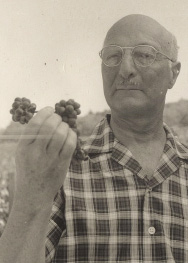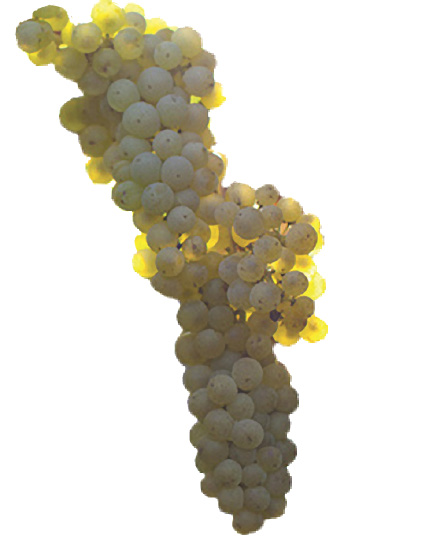- Home
- Media Kit
- Current Issue
- Past Issues
- Ad Specs-Submission
- Ad Print Settings
- Reprints (PDF)
- Photo Specifications (PDF)
- Contact Us

![]()
ONLINE

Grown, Produced, and Bottled at the Winery
Editors’ Note
In 2002, Jean Arnold Sessions assumed her current post. She has served in the wine industry since 1979 with executive positions at Chateau Montelena, Jordan, J Vineyards & Winery, Chalk Hill Estate, Williams Selyem, and Jackson Family Farms.
Company Brief
Ambassador James D. Zellerbach acquired 200 acres in the Mayacamas Mountains of northwestern California in 1948 to create a small vineyard and winery dedicated to Pinot Noir and Chardonnay. The Zellerbachs planted six acres in 1953 and created the first vintage in 1957. They named their winery Hanzell (www.hanzell.com), a contraction of Hana Zellerbach’s name. The Zellerbachs’ legacy was passed to the Day family in 1965, and in 1975, the de Brye family acquired the estate. The vineyard has grown to 46 acres, allowing Hanzell to produce 6,000 cases annually, of which approximately three quarters are Chardonnay and one quarter is Pinot Noir.

Ambassador Zellerbach
in the vineyards with
Pinot Noir grapes
What was the vision for Hanzell in the early days? Did the founders imagine it would have grown to the extent it has?
Ambassador Zellerbach was an innovator and pioneer, and his vision was to produce wines in California as great as those in Burgundy – not the same, but on the same quality level.
A lot of people say they want to make world-class wine yet they don’t know the world-class standards; he did. He spent a lot of time in Rome and Europe, especially in Burgundy, working on the Marshall Plan for the U.S. He was appointed to Ambassadorship in 1959. He had already purchased the property and hired two visionaries: a winemaker and a vineyard director.
The vision was to create a serious business and one at the highest quality level.
This is the vision we still embrace. We have grown to 6,000 cases from his 800; his 1965 Chardonnay sold at the most expensive California price of $6 a bottle; our most expensive Chardonnay from his original vineyard is $150 a bottle.
He envisioned that California could become a great leader in wine production, but I don’t know if he would have foreseen the incredible growth of the industry.
Hanzell is known as the winery where great wine making began and we continue on with that, learning from each vintage.

Chardonnay grapes harvested
from Hanzell Vineyards
Is it difficult to get the message across about the brand?
The wine business is quite cluttered, so getting our message across is extremely challenging; it requires a lot of risk-taking.
Our heritage and pedigree help in the points of differentiation. There is another concept that we’ve always worked with, which is grown, produced, and bottled at the winery – it’s a great line for a really important wine, because we have more control with our land and our vineyards and that is becoming more rare.
One of the double-edged swords for Hanzell and its heritage is the poten
tial of being perceived as being stuck in the past. So it is about remaining relevant as we move forward. It’s challenging and good work for me to communicate the respect for tradition and to keep the vision alive.
How much can you control in terms of improving quality?
You learn something every year about the nutrition and health of the soil and the ability to work with canopy management of the vine, to allow more sun or less sun; which nutrients might be needed for the soil; and the balance of how much fruit we set on the vine. We always look 10 to 15 years out from today.
In addition, the science continues to emerge and that can help us when we’re going through fermentation to pinpoint bacterial issues coming up in the wine early on; great wine is made in the vineyard, but there is always wine making involved.
Science also helps us to make sure the French oak barrels we use do not bring anything problematic into the winery or cave.
We are actively researching a new barrel project. In partnership with six coopers, we are testing the new barrels at very specific scientific levels.
How early on in a harvest can you tell how a vintage is going to play out?
For grape growing or wine growing, you want to have an idea of how much crop you can set for quality.
So we prune very rigorously and then we start to see the fruit that is growing. Spring weather is incredibly important, which is when the little clusters bloom. If you get a strong hot wind or rain, you lose some of your crop; and if you get a significant amount of rain and cold during that time, it can affect the crop for the next year.
Until you’re picking the fruit and bringing it into the winery, you really don’t know what you have.
By that time, you’re getting an idea of how much fruit and how much wine, and the potential quality. Then you have more time in fermentation and barrel aging.
As a winemaker, you’re nervous even up to two years after the wine is released; it’s a journey.
How have you kept the wine at a reasonable price?
The mission from Ambassador Zellerbach was never to be a cash machine where you grow lots of fruit, make the wine quickly, and release it the next year. Hanzell has always been about making great quality wine and charging a fair price for it.
Our wines are not inexpensive, but if you put them on the same table as some of the Burgundies we love to drink, they are a bargain. It’s trying to hold that line of high quality with a fair price.
With a 50-year-old property that needs maintenance and refurbishing, the owner is quite committed to protecting this land, but he does not require us to be hugely profitable.
What is it about this job that keeps you excited?
What is exciting about this work is our control and our lack of control; anything can happen because it is cultivating the wild in nature and that’s unpredictable.
The great relationships built through wine are also most exciting. For us, wine is not only a drink to enjoy with great friends, but also a means to open communication. In the intimacy of dining together, people are more open while enjoying great food and great wine. This common language often leads to great long-lasting friendships that are built on shared values; expressed at the dining table through the communication with a lovely glass of wine.•